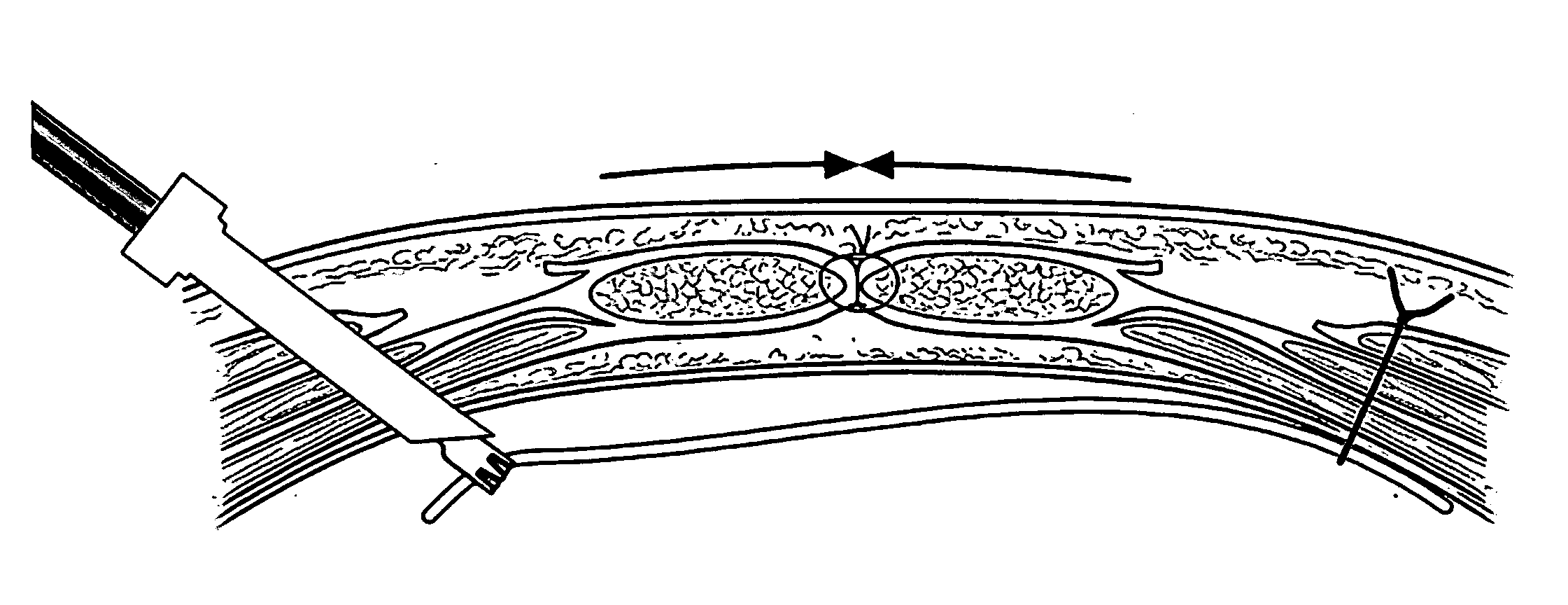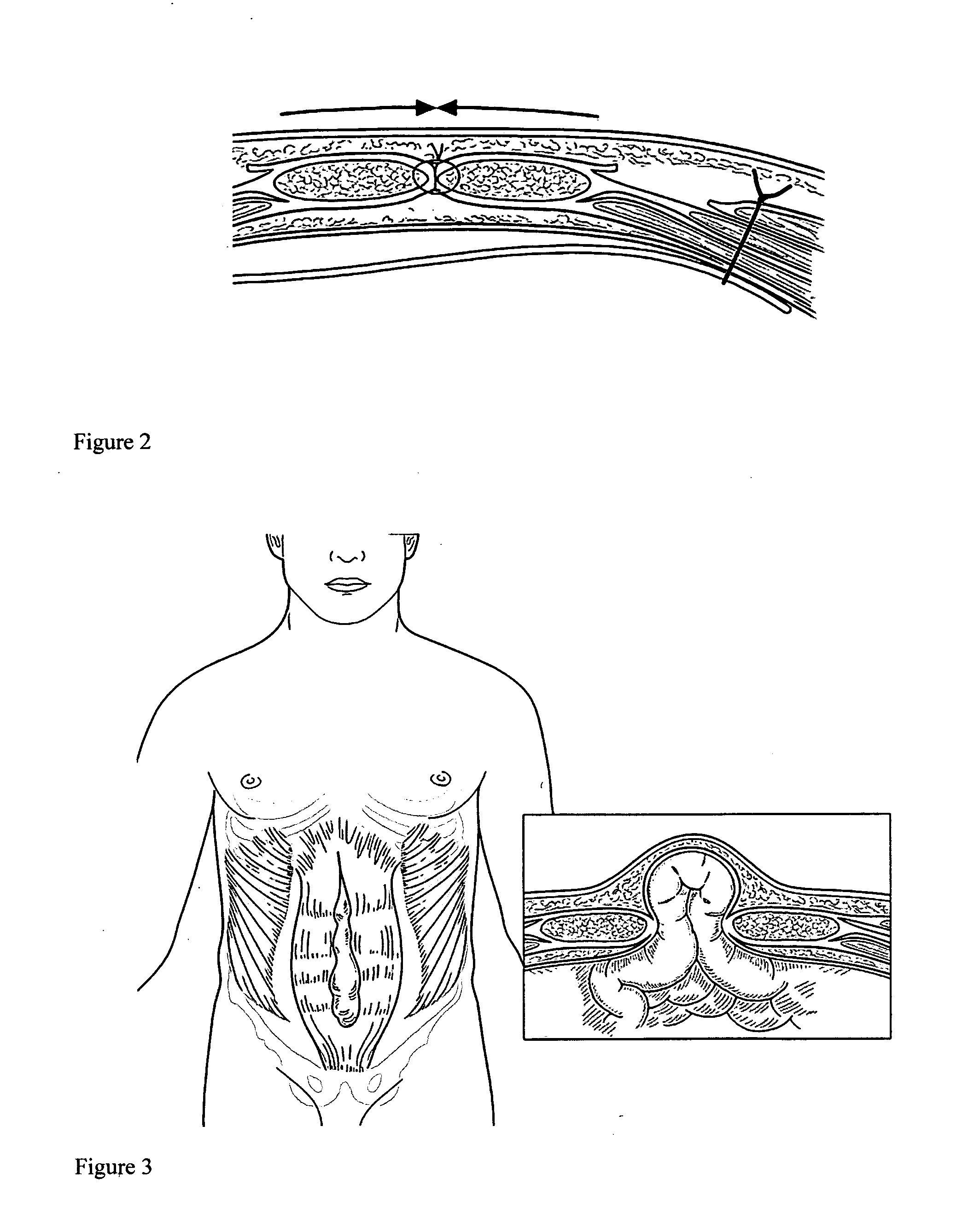Apparatus and method for use of a biosurgical prosthetic rectus sheath
a biosurgical and prosthetic technology, applied in the direction of prosthesis, surgical staples, surgical forceps, etc., can solve the problems of increased risk of herniation, poor technique of abdominal wall closing, poor midline healing, etc., to achieve convenient favorable healing, and easy and efficient manufacturing and marketing
- Summary
- Abstract
- Description
- Claims
- Application Information
AI Technical Summary
Benefits of technology
Problems solved by technology
Method used
Image
Examples
Embodiment Construction
[0052]With reference now to the drawings, and in particular to FIG. 1 thereof, the preferred embodiment of the new and improved surgical prosthetic device and method of use embodying the principles and concepts of the present invention and generally designated by the reference numeral 10 will be described.
[0053]The present invention, the new and improved surgical prosthetic device and method of use, is a device 10 comprised of a plurality of components. Such components, in their broadest context, includes a prosthetic mesh 10 for use in the known surgical methods for closure of abdominal incisions and prosthetics for repair of ventral hernias. The present invention provides for a new prosthetic mesh. It can be used routinely for closure of laparotomy incisions, in patients at high risk for hernia formation, and in the repair of existing ventral hernias. Each of the individual components is specifically configured and correlated one with respect to the other so as to attain the desir...
PUM
| Property | Measurement | Unit |
|---|---|---|
| Time | aaaaa | aaaaa |
| Length | aaaaa | aaaaa |
| Length | aaaaa | aaaaa |
Abstract
Description
Claims
Application Information
 Login to View More
Login to View More - R&D
- Intellectual Property
- Life Sciences
- Materials
- Tech Scout
- Unparalleled Data Quality
- Higher Quality Content
- 60% Fewer Hallucinations
Browse by: Latest US Patents, China's latest patents, Technical Efficacy Thesaurus, Application Domain, Technology Topic, Popular Technical Reports.
© 2025 PatSnap. All rights reserved.Legal|Privacy policy|Modern Slavery Act Transparency Statement|Sitemap|About US| Contact US: help@patsnap.com



